Rebuilt using modern technology, cutting-edge animation, and 4k resolution, The Last of Us Part 1 re-establishes itself as one of the best video games ever made.
Back in 2013, The Last of Us set the gaming world alight with its compelling characters, gore-fuelled gameplay, and a unique take on the dystopian apocalypse.
To this day, it remains one of the most critically acclaimed games of all time. Its only limitation, if you can think of one, is the era in which it was made. Back then, the PlayStation 3 could only do so much.
In the nearly 10 years since its release, it has spawned a remaster, a DLC, and an equally successful sequel. But now, using the full capabilities of the PlayStation 5, the original game has been rebuilt from scratch.
This is not merely a fresh lick of paint thrown on to appease fans. Everything that made The Last of Us a behemoth of gaming has been entirely reconstructed from the ground up, using modern technology.
The result? A game that perfectly blends nostalgia with modernity. Make no mistake; this is how The Last of Us should be played. This is how it should be remembered. The visceral detail found at every angle thins the line between realism and gaming.
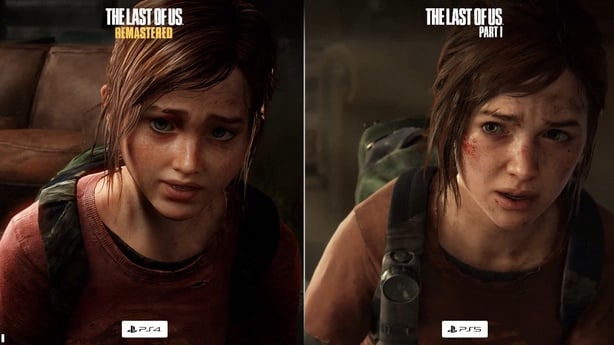
And, with a HBO adaptation starring Pedro Pascal and Bella Ramsey due for release next year, now is the perfect time to rejoin Joel and Ellie on one of gaming's most beloved stories.
The PS5: Revolutionizing storytelling
It only takes a few minutes of gameplay to recognize that the world has ended in The Last of Us. An outbreak of mutant fungus ravages civilization, causing widespread hysteria and panic. Bodies litter pavements. The dead are now dangerous. The living, even more so.
For players who've already experienced the game, the upgrade in graphics, animations, light, and sound will be colossal. And easy to recognize.
Sure, you might remember what to do and where to go initially, but nothing quite prepares you for the realism you'll experience.
Every character has microscopic details about them. Every scene you pass begs for investigation. You'll instinctively switch to the game's Photo Mode just to take it all in.
When characters like Sarah, Tess, and Bill appear, you'll understand the extent and caliber of the upgrade. Every single pore on their face feels life-like. Their eyes tell a story of their own. You may remember them – but not quite like this.
And as for the enemies; from the newly infected with their bloodshot eyes to the look of panic on a poacher's face as you ambush them, to the pustules of a fermenting Bloater as he charges at you – every pixel commands your undivided attention. You can create a cinematic spectacle with just the hit of the pause button.
The PS5's DualSense controller also plays a pivotal role in heightening the sense of immersion (and panic) you'll suffer through. At times the only reminder this is a video game will be the controller clutched in your hands.
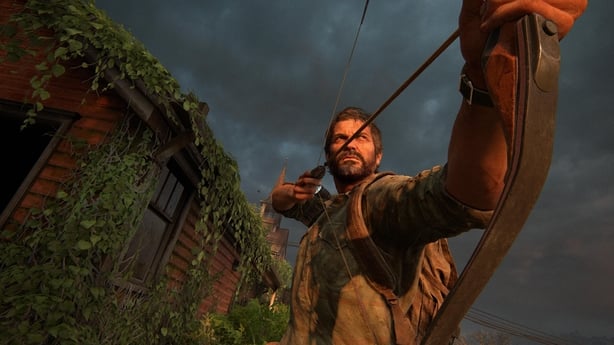
From feeling the patter of rain above to the crunch of snow below to the tug and pull of your bow as you quickly scope a charging enemy, you'll always feel like you're in the thick of it. And it's here that this rebuilt version of the game makes absolute sense, and its ambition is clear to see.
The game's updated visuals don't take from the original story. In fact, the plot lies untouched. Die-hard fans, you can relax! But the new graphics, animations, and fluidity of playing on the PlayStation 5 have released the original story's untapped capabilities. The Last of Us Part 1 succeeds in modernizing one of gaming's best-told stories.
For newcomers: What exactly is The Last of Us about?
The Last of Us Part 1 is not a game for pacifists. It is a game of kill or be killed. It is a splatterfest and then some.
You'll spill copious amounts of blood and kill virtually everyone (and everything) in your path. And it's through this motif the game asks its central question - what are you prepared to do to protect the ones you love?
For Joel, the answer is everything. He's a level-headed but weary bystander to the destruction of humanity. Some twenty years into this new world, he is tasked with smuggling 14-year-old Ellie out of the squalor of quarantine for a monumental cause.
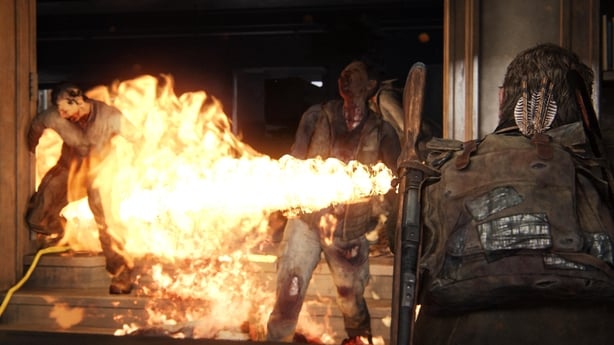
This decision propels him out of his comfort zone and into a world where unspeakable things lie in wait. But by facing an army of undead, both heroes forge a new path to find new reasons to keep on living.
But to do this, players have some choices to make. Just what way do you want to survive? Sometimes, it's wiser to cling to the shadows of the dilapidated buildings, striking from the shadows and executing foes from behind.
Other times, you'll throw caution (and a few nail bombs) to the wind and run at them at full throttle, hoping you can somehow secure an escape.
The game is always in control
Ultimately, it's the game that is in control. If it wants you scared, you'll be scared. Sometimes the most agonizing parts are when nothing happens at all, and all you hear are the gnarls and snarls from the room next door.
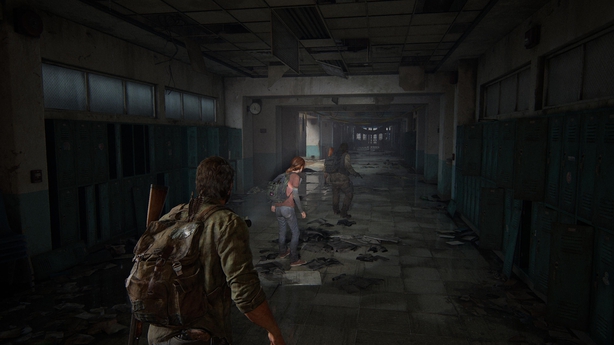
Perfectly quiet houses are a nest of anxiety and paranoia. Sometimes, leaving doors locked is better, as curiosity can be lethal. Turning on the lights of dark rooms and sewers are met with impending dread - sometimes, the dark screen is the only comfort you find.
All the while, you're scavenging for supplies. You'll never look at office desks and toolsheds the same again after playing this game, as copious amounts of scissors, masking tape, and god knows what else are all fashioned into shivs and bombs. If you're going to die, it won't be without a fight. Sadly, there will never be enough bullets to fund the various pistols and shotguns you'll find.
A timeless story of chaos, carnage, and childhood
Whether in this game or its sequel, The Last of Us has never shied away from asking difficult questions. Who are the good guys in all of this? Are you one of them?
Early in the game, Ellie asks Joel if he's killed any innocent people. She's met with silence. If you're alive 20 years into a plague, you've done unspeakable things to survive.

Throughout your travels, you'll uncover countless artifacts, diary entries, notes, and accounts from people, all documenting the universal descent of humanity.
But amid the madness of human and inhuman warfare is 14-year-old Ellie. It's through her dialogue, her actions, and her emotions that ground Joel. With Ellie, he doesn't just want to just survive anymore. He wants to live.
And despite the pressures destiny has put on her – Ellie is the last glimpse of innocence in a world plunged in wickedness.
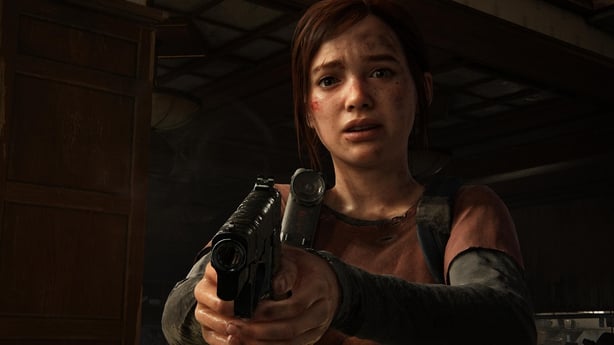
She collects comics. She plays with any other kid she meets. She shares her dreams of becoming an astronaut. She doesn't understand how an ice cream truck works.
Her innocence is the perfect symbol of what's at stake. And although it is slowly robbed over the course of the game, it fuels the fire Joel (and you) need to reach the end.
It cannot be understated how much chemistry Troy Baker (Joel) and Ashley Johnson (Ellie) share on screen, even these many years on. The success of the game and its characters can be rooted in their mesmerizing, consistent portrayals.
The final word: a cinematic spectacle to be enjoyed or re-enjoyed
Although the original game debuted back in 2013, the story of an infection that ravages the world and the lengths people may go through to endure and survive is more relatable now than ever.
Purists of the game's original story will be happy to know the game never colours outside the lines. I am envious of any newcomers who get to experience the core game and its DLC Left Behind for the first time. You're in for a gore-filled treat. Avoid spoilers and take in the magic of the story.
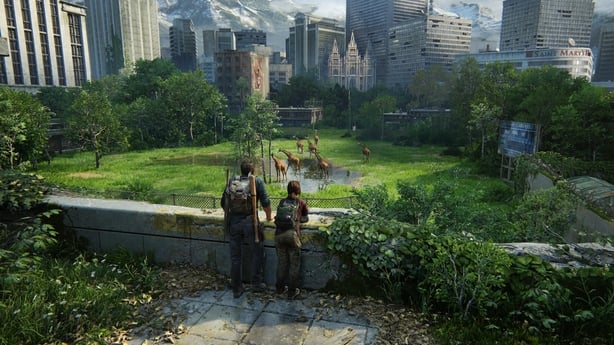
Joel and Ellie's ordeal may feel eerily familiar, but the capabilities of the PlayStation 5 present new ways to instill fear into you. And with new settings, accessibility options, and game modes to uncover, there are still plenty of new ways to explore this old, familiar world.
The Last of Us Part 1 is available on PlayStation 5 from September 2nd. A PC version is currently in development.


